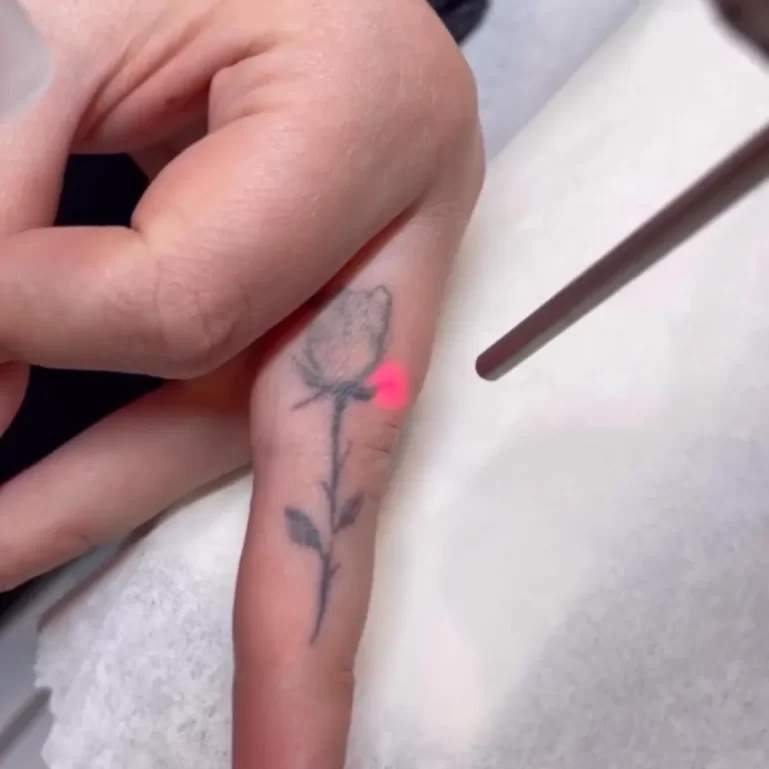
Guide to Laser Tattoo Removal Aftercare
Laser tattoo removal has become a favoured approach for ditching unwelcome tattoos, seeing an uptick in folks going through with it annually.

Specialists indicate that around 11% of tattooed people decide to get their tattoos erased.
Many patrons come forward with questions about the procedure, yet it’s pivotal to understand that the journey doesn’t end as soon as the ink fades away.
Following every session, properly caring for your skin is vital as it might expedite the fading process.
Read our thorough aftercare manual for top-notch advice on tending to your skin after laser tattoo removal near me.
Before we talk about the recovery period, it’s important to know what happens during a laser tattoo removal session.
How do you care for your skin post-treatment?
Tattoos can be removed from various body parts, and monitoring the area closely for any changes after treatment is essential.
During the initial three days, apply a layer of antibiotic healing ointment to the treated area and cover it with sterilised gauze. Avoid using any other creams or makeup on the area during this time.
The bandage can be removed after three days. Keeping the area clean and dry is essential, and Vaseline, Aquaphor, or hydrocortisone cream should be considered for moisturisation as it heals.
Vitamin E ointment is known for its ability to assist in the repair of damaged skin cells.
Wearing sunblock with SPF 25+ when going outside is recommended, as sun exposure can be harmful to the skin after laser removal.
Boost your immune system for treatments
A robust immune system plays a crucial role in wound healing by aiding the body’s repair process and defending against infections.
There are specific actions you can take to achieve results more quickly.

- Drinking plenty of water is recommended to maintain a robust immune system, as it aids in flushing out toxins and restoring blood cells to prevent infections.
- Reducing alcohol consumption is recommended, as excessive intake can lead to dehydration, which may hinder the healing process. Avoiding alcohol altogether is advised when possible.
- Smoking can weaken your immune system. This makes it harder for your body to heal your skin. Non-smokers often have better results and require fewer treatments for skin issues. Avoid smoking to improve your skin health.
- Exercise is beneficial for increasing blood flow. This improved blood flow can aid in breaking down ink particles in the skin during tattoo removal. It is advisable to avoid exercising for a few days after treatment. However, once the skin has scabbed over, physical activity can assist in the tattoo removal.
Two things it is advisable to avoid
One must avoid two specific actions to achieve quicker and more efficient outcomes.
Don’t stay in the sun too long
It is essential to avoid exposing the treated area to the sun after laser tattoo removal near me, as sunburn can disrupt the treatment schedule until the skin returns to its standard colour.
Delaying treatments will extend the duration of the process and delay the achievement of permanent results.
Exposure to UV rays, whether resulting in sunburn or tanning, can impede the skin’s natural healing process. Protecting your skin with sunscreen, clothing, or bandages when spending time in the sun is essential.
Don’t pick scabs or pop blisters
Blistering and scabbing are common occurrences during the healing process. It is recommended to refrain from popping or picking at your skin.
Opening the wound can lead to a higher infection risk and slow healing.
It is recommended to avoid shaving over areas with scabs or blisters, as using a razor can potentially open the wound.
It is recommended to allow scabs to naturally fall off and for blisters to drain on their own for optimal healing.
Tattoo removal healing time varies
Post-laser recovery spans 4 to 8 weeks, with your actions during this period influencing the healing course.
Factors like the type of treatment, immune system robustness, and aftercare adherence play a role in healing timelines.
Efforts post-treatment are as pivotal to the removal process as the laser sessions themselves.
Staying hydrated and fostering a healthy immune system can shave weeks off the recovery time, ensuring the wound mends uninterrupted by keeping the scab intact.
Is showering after laser tattoo removal allowed?
Once the bandage comes off, showering and gently washing the treated area with mild soap is recommended. High-pressure water is a no-go, and patting the area dry gently is best.
Hold off on full soaks until the area’s fully mended. Baths, hot tubs, and pools are best avoided to mitigate infection risks.
Conclusion
On average, patients typically require 5 to 8 laser treatments, each spaced about six weeks apart, to achieve noticeable results based on individual skin type and condition.
Individual results and the number of treatments needed may also vary. You should consult with your technician before starting treatments to discuss expectations.
After your tattoo session, inquire with your technician about proper care instructions. They will provide you with aftercare tips to promote safe and efficient healing of your skin.
Maintaining a robust immune system, protecting your skin from the sun, and allowing scabs to heal naturally is essential. Failure to do so can result in skin damage, delays in future sessions, and prolonged healing times.